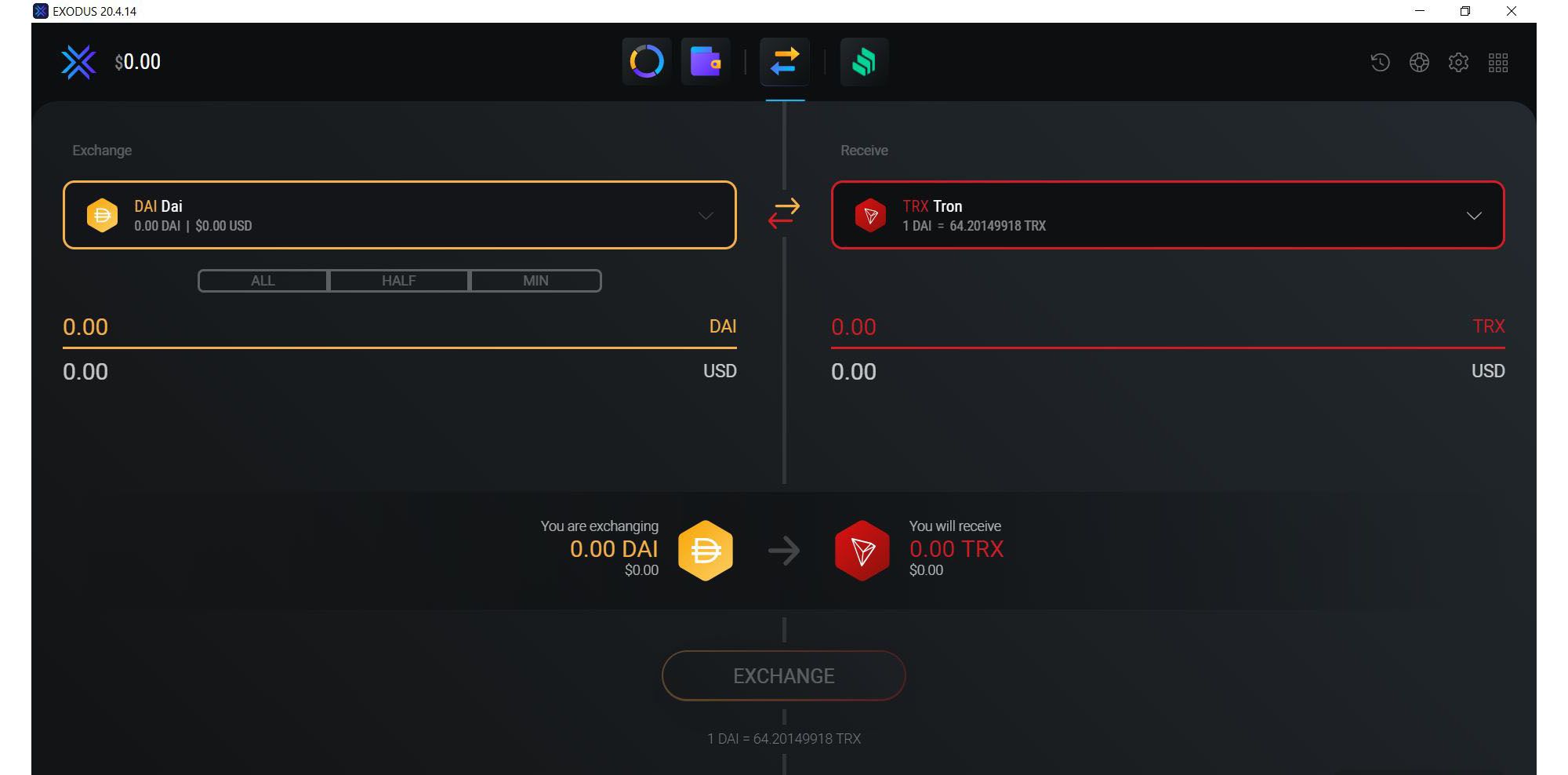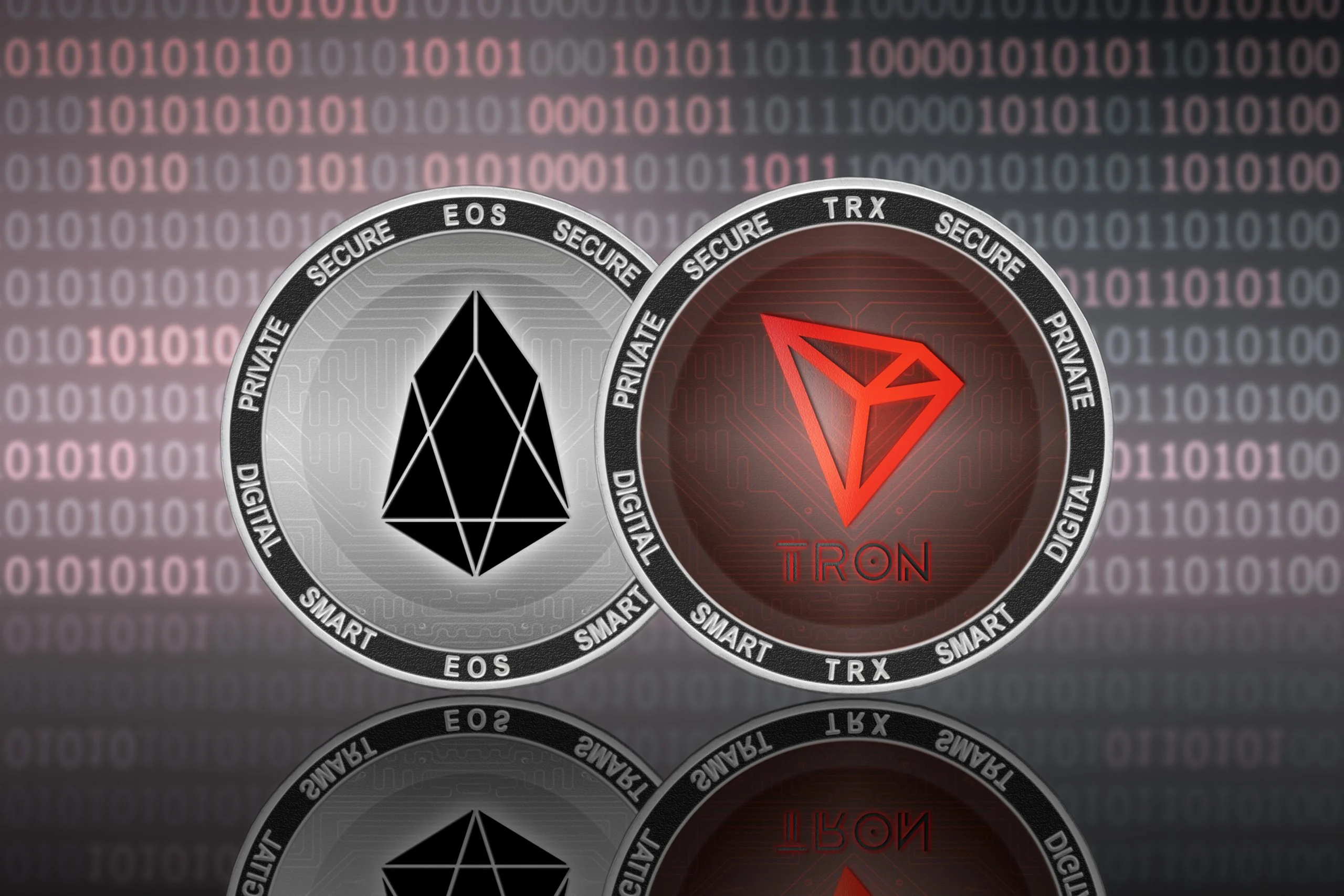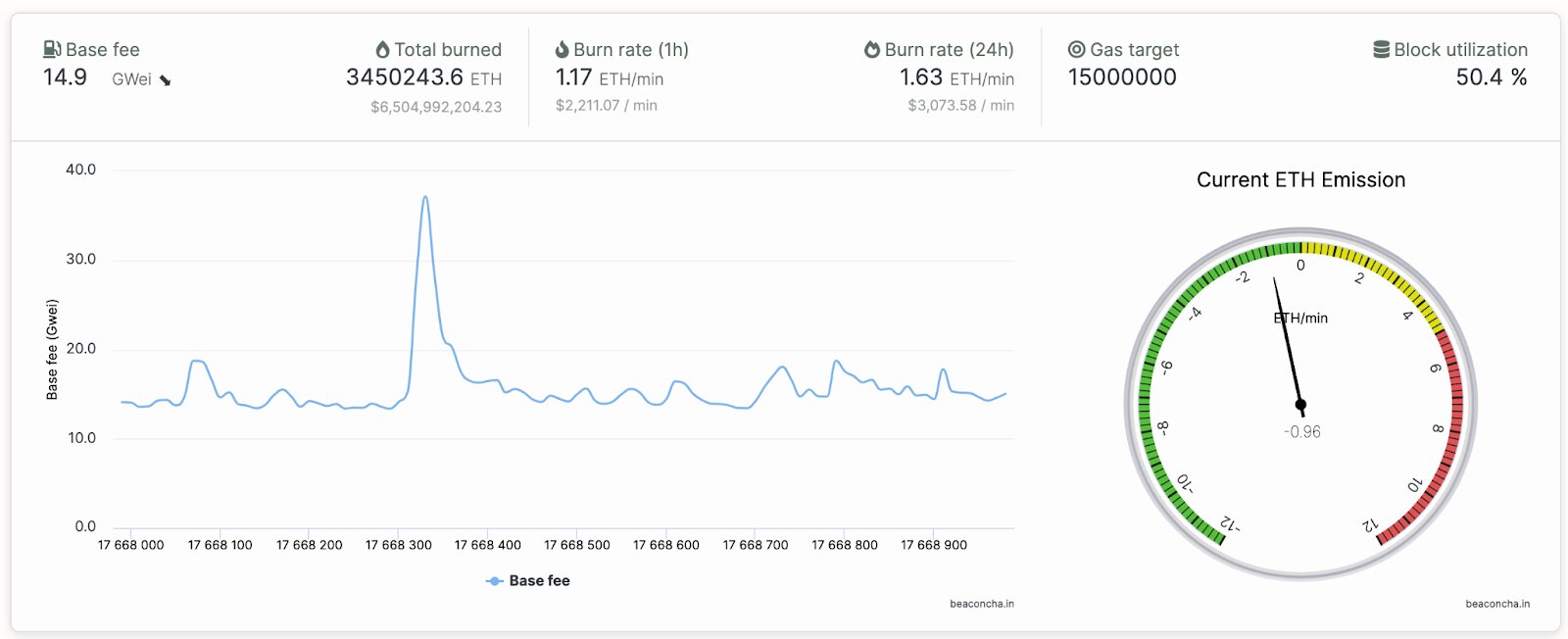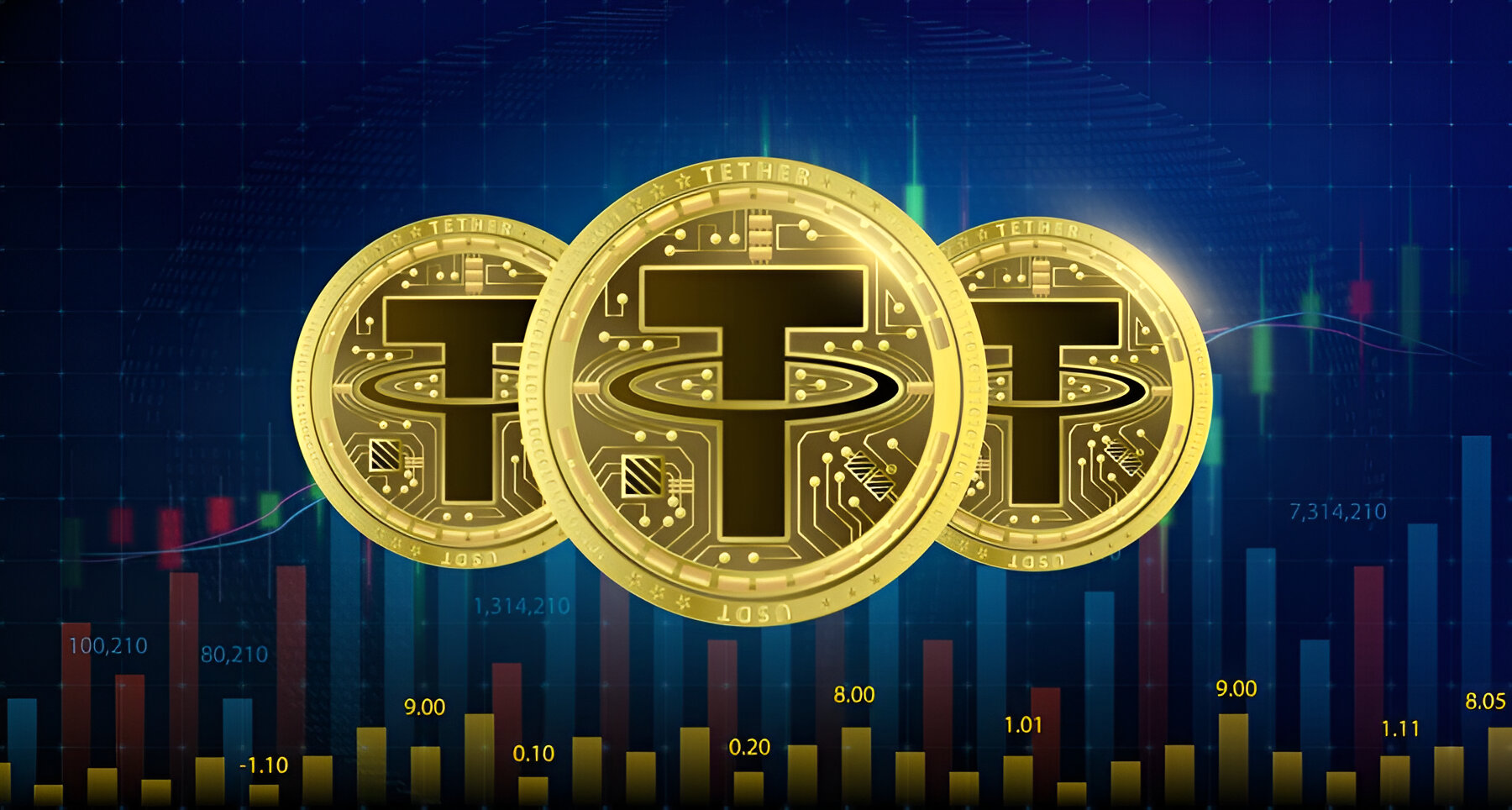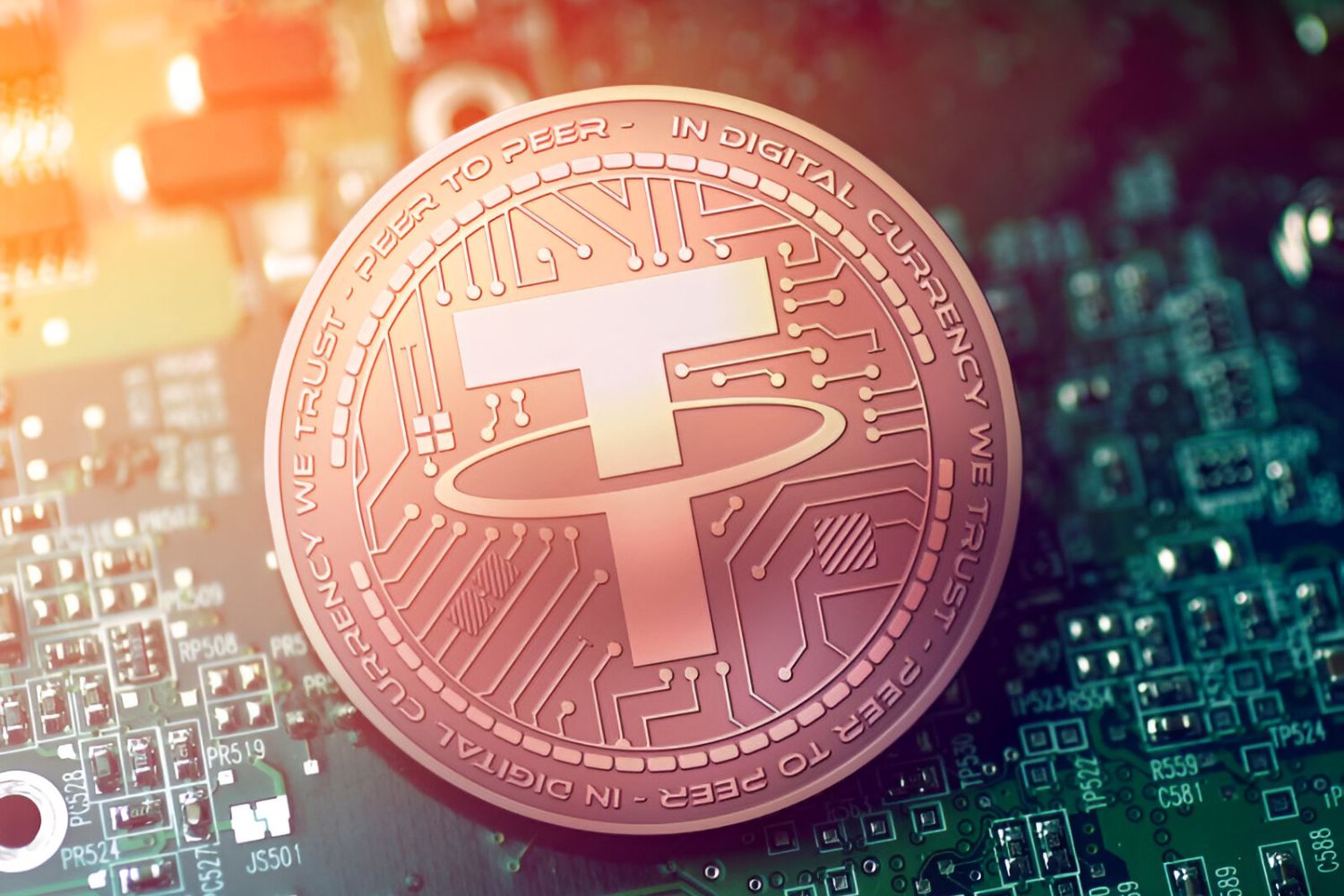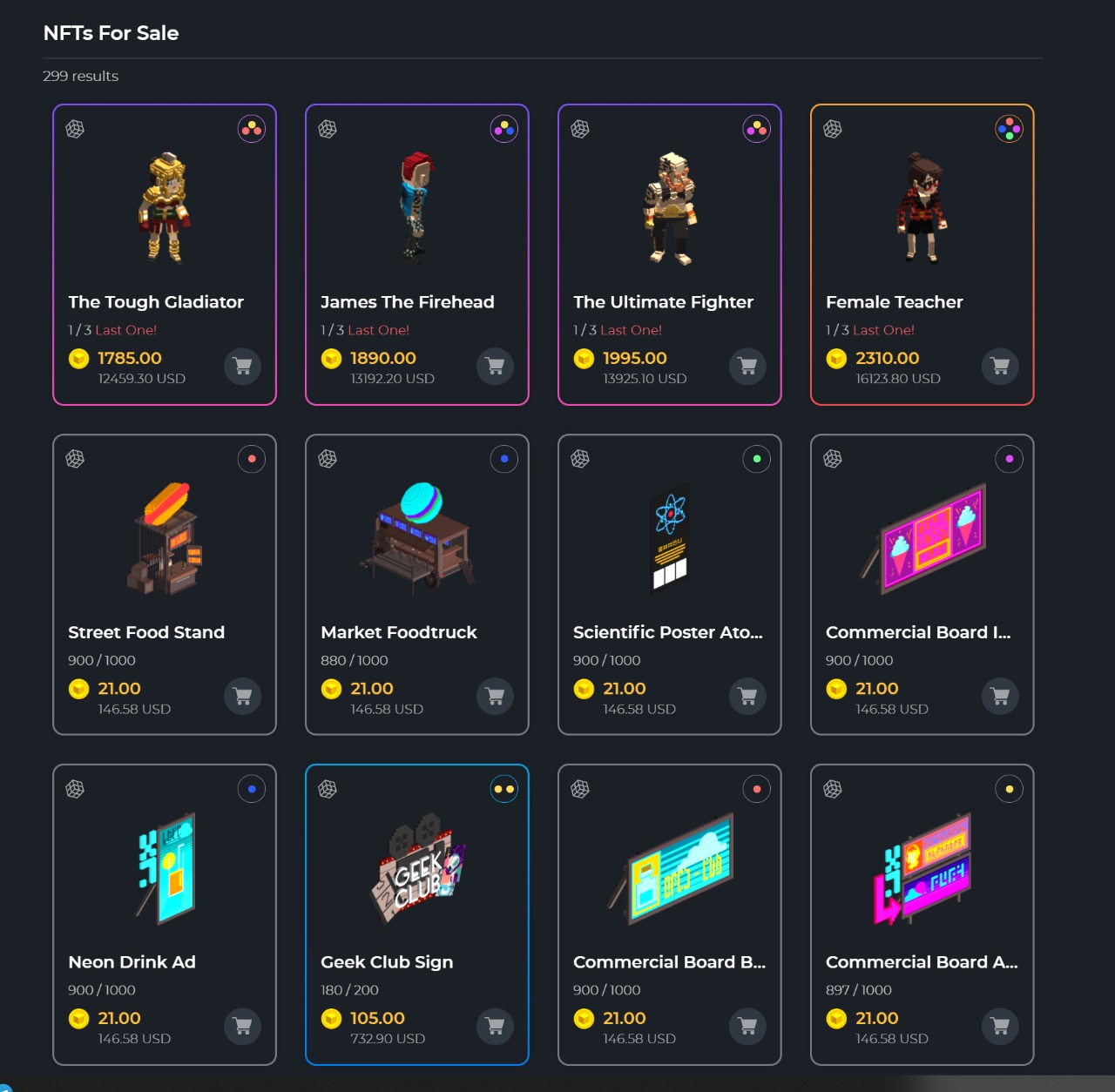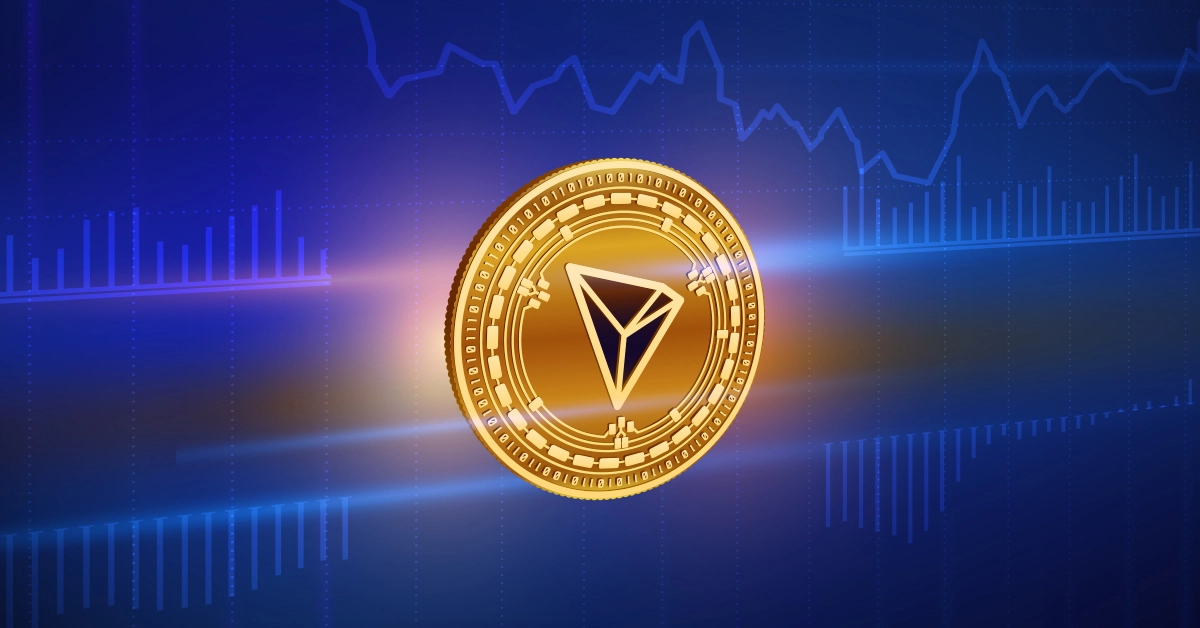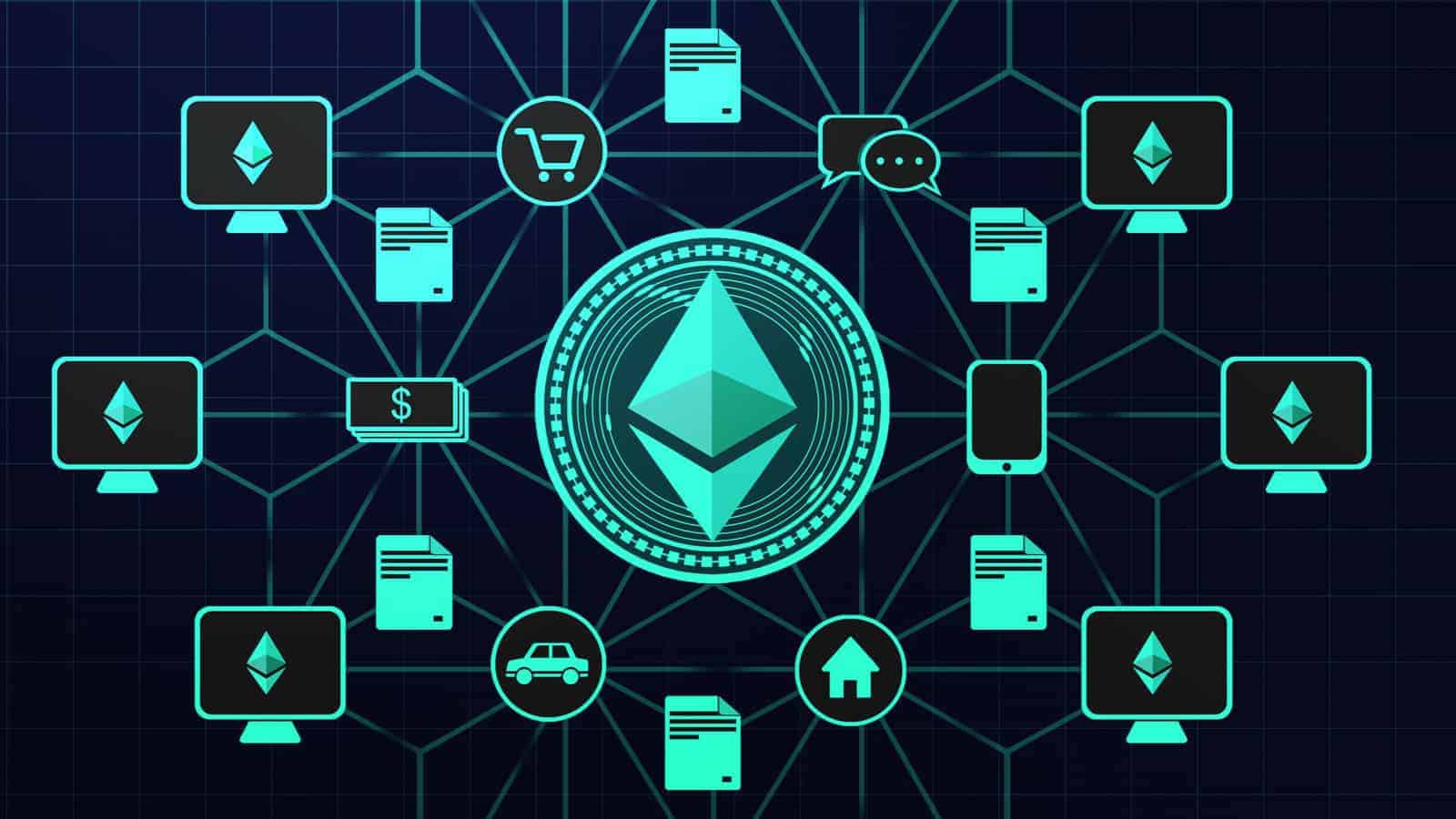Introduction
Welcome to the world of Tron, a revolutionary cryptocurrency that has been making waves in the digital currency space. Tron is not just another cryptocurrency; it is a blockchain-based platform that aims to revolutionize the entertainment industry by allowing content creators to connect directly with consumers. With its innovative technology, Tron promises to decentralize the internet and reshape the way we consume and distribute content.
Launched in 2017 by Justin Sun, a young and ambitious entrepreneur, Tron has quickly gained popularity and established itself as one of the top cryptocurrencies in the market. With its growing user base and strategic partnerships with industry leaders, Tron has garnered attention and excitement from both investors and enthusiasts alike.
The concept behind Tron is to eliminate the middlemen and intermediaries that currently dominate the entertainment industry. This means removing the need for centralized platforms that control content distribution and take a large chunk of the creators’ revenue. With Tron, content creators can directly interact with their audience and receive fair compensation for their work.
Tron operates on its blockchain, which supports smart contracts and decentralized applications (DApps). These DApps enable developers to create innovative platforms, ranging from social media networks to gaming and streaming platforms, all within the Tron ecosystem.
One of the key features of Tron is its native token, known as TRX. TRX plays a vital role in the Tron network, facilitating transactions, incentivizing content creators, and powering the ecosystem. TRX has gained significant attention in the cryptocurrency market and has seen substantial growth since its inception.
Since its launch, Tron has faced its fair share of challenges and controversies. Critics argue that the project lacks substance and accuse it of being a hype-driven venture. However, Tron’s growing ecosystem and strategic partnerships show its potential for long-term success.
In this article, we will dive deeper into the world of Tron, exploring its history, how it works, the benefits it offers, its native token, DApps and smart contracts, the role of TRON Super Representatives, the Tron Foundation, comparisons with other cryptocurrencies, challenges it faces, and its future outlook.
So, sit back, relax, and get ready to explore the exciting world of Tron!
What is Tron?
Tron, also known as Tronix (TRX), is a blockchain-based platform that aims to decentralize the entertainment industry. It was founded by Justin Sun, a young and visionary entrepreneur, in 2017. Tron’s goal is to eliminate middlemen and intermediaries that currently control content distribution and take a substantial portion of the creators’ revenue. By leveraging blockchain technology, Tron aims to revolutionize the way content is created, consumed, and monetized.
At its core, Tron is designed to be a decentralized platform where content creators can directly connect with their audience without the need for centralized platforms like YouTube or Facebook. Through smart contracts and decentralized applications (DApps), Tron facilitates direct peer-to-peer interactions, providing content creators with more control over their work and giving them a fair share of the revenue. This peer-to-peer model eliminates unnecessary fees and restrictions imposed by intermediaries, ensuring better transparency, accountability, and profit sharing for content creators.
Tron’s vision is not limited to just the entertainment industry; it aims to decentralize the internet as a whole. With the growing influence of tech giants and concerns surrounding data privacy, Tron’s decentralized approach promises to give users more control over their data and information. By removing the need for central authorities, Tron envisions a future where individuals have the power to determine how their data is used and shared.
To achieve its goals, Tron utilizes its native blockchain and cryptocurrency, TRX. TRX serves as the fuel for the Tron ecosystem, powering transactions, incentivizing content creators, and facilitating the development and deployment of DApps. TRX has gained significant traction in the cryptocurrency market and is widely traded on various exchanges.
Tron’s blockchain infrastructure supports high throughput and scalability, capable of handling a large number of transactions per second. This ensures seamless user experiences and makes Tron an efficient platform for content distribution and interaction. Additionally, Tron is built on a proof-of-stake (PoS) consensus mechanism, which ensures energy efficiency and reduces its environmental impact compared to other cryptocurrencies like Bitcoin.
Overall, Tron’s mission to decentralize the entertainment industry and empower content creators is at the forefront of its development. With its innovative approach and strong community support, Tron has emerged as a promising blockchain platform that holds the potential to reshape the way we consume and engage with content. As we delve deeper into the world of Tron, let’s explore its history, how it works, the benefits it offers, its native token (TRX), its DApps and smart contracts, the role of TRON Super Representatives, the Tron Foundation, comparisons with other cryptocurrencies, challenges it faces, and its future outlook.
History of Tron
The history of Tron starts with its founder, Justin Sun, who is recognized as a charismatic and ambitious figure in the world of blockchain and cryptocurrencies. Sun is a protege of Jack Ma, the founder of Alibaba Group, and has a strong background in tech and entrepreneurship.
Tron was announced in September 2017 with the goal of decentralizing the entertainment industry. Sun’s vision was to create a platform where content creators could connect directly with their fans, eliminating the need for intermediaries and middlemen that often take a significant portion of the revenue.
Tron’s journey gained momentum quickly, gaining attention due to its ambitious objectives and Sun’s extensive network in the tech industry. The project managed to secure multiple high-profile partnerships before its official launch. These partnerships included agreements with Peiwo, a popular social media platform, and various entertainment companies.
The official Tron ICO (Initial Coin Offering) took place from August to September 2017, raising over $70 million by selling TRX tokens to investors. The successful ICO helped fund the development and operation of the Tron platform.
In June 2018, Tron completed its mainnet migration, transitioning from the Ethereum blockchain to its independent blockchain. This move allowed Tron to have full control over its network and provided improved speed and scalability for its users.
Since then, Tron has continued to expand its ecosystem and partnerships. It acquired BitTorrent, a leading peer-to-peer file sharing platform, in 2018, further solidifying its presence in the digital entertainment industry. The acquisition of BitTorrent gave Tron access to a massive user base and enabled the integration of blockchain technology into the file-sharing platform.
Tron’s growth has been fueled by numerous strategic partnerships with major industry players. Notable collaborations include partnerships with Samsung, Opera Browser, and the Steemit social media platform. These partnerships have provided Tron with increased exposure and adoption potential.
Tron’s development has not been without its share of controversies and challenges. The project has faced criticism for its aggressive marketing tactics and perceived lack of substance. Nonetheless, Tron has remained resilient and has continued to prove its legitimacy through its growing ecosystem, partnerships, and active development.
Looking ahead, Tron aims to further disrupt the entertainment industry and expand its reach globally. With its innovative technology and relentless pursuit of its vision, Tron has positioned itself as a formidable player in the blockchain space, and its journey is one that is worth following closely.
How does Tron work?
Tron operates on its own blockchain, employing various technologies and mechanisms to achieve its goal of decentralizing the entertainment industry. Let’s delve into the key components and functions of Tron’s architecture.
Smart Contracts and Decentralized Applications (DApps): Tron’s blockchain supports the execution of smart contracts, which are self-executing contracts with predefined rules and conditions. Smart contracts are crucial in enabling the creation of decentralized applications (DApps) on the Tron platform. DApps on Tron allow developers to create innovative platforms, ranging from social media networks to gaming and streaming platforms, all within the Tron ecosystem.
Proof-of-Stake (PoS) Consensus Mechanism: Tron employs a PoS consensus mechanism to validate transactions and secure its network. This mechanism involves TRX token holders, known as Super Representatives, who validate transactions and produce new blocks. TRX token holders can vote for Super Representatives, who play a vital role in maintaining the integrity and security of the Tron network.
Distributed Storage: Tron utilizes a distributed storage system to ensure the availability and accessibility of content within the network. This distributed storage system allows content creators to store and distribute their data across multiple nodes in a secure and decentralized manner.
Bandwidth and Energy: Tron introduces a unique concept of bandwidth and energy to incentivize users and ensure the smooth functioning of the network. Bandwidth represents the capacity of a user to perform transactions and interact with the network, while energy is required to execute smart contracts and participate in certain activities. TRX token holders are allocated bandwidth and energy based on their token holdings, encouraging active engagement within the Tron ecosystem.
TRX Token: The native cryptocurrency of the Tron network is called TRX. TRX plays a vital role within the Tron ecosystem, serving as a medium of exchange, governance, and resource allocation. TRX is utilized to power transactions, reward content creators, and access various features and functionalities within the Tron network.
Blockchain Explorer: Tron provides users with a blockchain explorer, allowing them to track and verify transactions, view smart contracts, and explore the state of the network. The blockchain explorer provides transparency and visibility into the Tron ecosystem, ensuring the integrity and trustworthiness of the platform.
Overall, Tron’s architecture and technology provide a robust foundation for the decentralization of the entertainment industry. By leveraging smart contracts, DApps, a PoS consensus mechanism, distributed storage, bandwidth and energy systems, and the TRX token, Tron empowers content creators, users, and developers to participate in a transparent and fair ecosystem. The combination of these components creates an innovative and decentralized platform that has the potential to revolutionize the way we consume and interact with entertainment content.
Benefits of Tron
Tron offers several compelling benefits that set it apart from traditional centralized platforms and other blockchain-based projects. Let’s take a closer look at some of the key advantages of Tron:
Decentralization: One of the primary benefits of Tron is its underlying philosophy of decentralization. By eliminating intermediaries and allowing direct interactions between content creators and consumers, Tron aims to democratize the entertainment industry. This decentralized approach ensures greater transparency, removes unnecessary fees, and gives creators more control over their content and revenue.
Transparent and Fair Revenue Sharing: Tron’s blockchain-based platform enables transparent and fair revenue sharing between content creators and consumers. Unlike traditional platforms that impose hefty fees and take a significant portion of the revenue, Tron ensures that creators receive a fair share of the profits generated by their content. This incentivizes creators to produce high-quality content while fostering a more equitable ecosystem.
Direct Interaction with Audience: Tron allows content creators to interact directly with their audience without intermediaries. This direct interaction fosters a sense of community and strengthens the relationship between creators and consumers. Additionally, it enables creators to gather feedback, understand their audience better, and tailor their content to meet their fans’ preferences and desires.
Reduced Censorship and Restrictions: Tron’s decentralized nature and smart contracts enable a more open and inclusive platform that reduces censorship and restrictions. Content creators have the freedom to express their ideas and creativity without fear of arbitrary takedowns or censorship from centralized authorities. This enables a more diverse and innovative range of content, promoting freedom of expression.
Fast and Scalable: Tron’s blockchain infrastructure is designed to handle a high volume of transactions quickly and efficiently. This fast and scalable network ensures smooth user experiences, allowing content creators and consumers to interact seamlessly within the Tron ecosystem. With its high throughput capabilities, Tron is well-equipped to process large-scale applications and platforms.
Incentives for Participation: Tron’s ecosystem provides incentives for active participation. Users who hold TRX tokens can engage in voting for Super Representatives and contribute to network governance. Additionally, content creators are rewarded with TRX tokens based on the quality and popularity of their content. These incentives drive engagement and strengthen the ecosystem by fostering a sense of ownership and community involvement.
Secure and Immutable: Tron’s blockchain offers security and immutability for content and transactions. By leveraging the power of distributed ledger technology, Tron ensures that data stored on the network is tamper-proof and resistant to unauthorized modifications. This provides greater security for content creators and consumers alike, protecting their intellectual property and maintaining the integrity of the platform.
Tron’s innovative approach to decentralizing the entertainment industry, its focus on transparency, fair revenue sharing, direct interaction, reduced censorship, fast scalability, participation incentives, and secure infrastructure make it an attractive platform for content creators and consumers. While Tron continues to face challenges and undergo further development, its potential to reshape the entertainment landscape is undeniable.
TRX Token
The TRX token is the native cryptocurrency of the Tron blockchain platform. It serves as the fuel for various operations within the Tron ecosystem and plays a crucial role in facilitating transactions, incentivizing content creators, and accessing features and functionalities. Let’s explore the key aspects of the TRX token.
Utility: The TRX token has multiple use cases within the Tron network. Users can utilize TRX for making transactions, paying for services and products within the ecosystem, and accessing premium features of decentralized applications (DApps) developed on the Tron platform. TRX also serves as a medium of exchange between content creators and consumers, enabling seamless and frictionless transactions.
Resource Allocation: TRX plays a significant role in resource allocation within the Tron ecosystem. It is used to allocate bandwidth and energy to users, which determine their capacity to perform transactions and interact with the network. Users with more TRX holdings have greater access to network resources, incentivizing token ownership and active participation.
Incentives for Content Creators: TRX token incentivizes content creation on the Tron platform. Content creators can earn TRX by producing and sharing high-quality content that resonates with the Tron community. This incentivization mechanism encourages creators to contribute valuable content and fosters a vibrant ecosystem of diverse and engaging content offerings.
Token Economics: The total supply of TRX is capped at 100 billion tokens. During the initial coin offering (ICO) phase, a significant portion of the total supply was distributed to private investors and the Tron Foundation. TRX can be obtained through exchanges or participating in the Tron network. Over time, Tron has been implementing token burn mechanisms to reduce the circulating supply, aiming to create scarcity and potentially drive up the value of TRX.
Store of Value: TRX can also serve as a store of value for investors. Like other cryptocurrencies, the value of TRX fluctuates based on market conditions and investor sentiment. Some individuals buy and hold TRX tokens as a long-term investment, speculating on its potential growth and increased adoption within the Tron ecosystem and beyond.
Exchange Listings: TRX is listed on numerous cryptocurrency exchanges, making it easily accessible for individuals who wish to acquire or trade the token. Its availability on various exchanges contributes to liquidity and enables users to buy, sell, and trade TRX efficiently.
Integration with DApps: TRX’s compatibility with decentralized applications built on the Tron platform allows users to utilize the token for a wide range of activities. From gaming and entertainment platforms to social media networks and content sharing platforms, TRX provides the means of engagement, participation, and transactions within these DApps.
As the foundation of the Tron ecosystem, the TRX token brings utility, incentives, and liquidity to the platform. Its role in facilitating transactions, resource allocation, rewarding content creators, and integration with DApps showcases the importance of TRX as a key component in driving the growth and success of the Tron network.
Tron’s DApps and Smart Contracts
Tron’s blockchain platform enables the development and deployment of decentralized applications (DApps) through the use of smart contracts. These DApps are an essential part of the Tron ecosystem, offering a wide range of innovative applications and services. Let’s explore the significance of Tron’s DApps and the role of smart contracts in facilitating their operation.
Decentralized Applications (DApps): Tron enables developers to create DApps that are powered by its blockchain. These DApps operate on a peer-to-peer network, allowing users to interact and transact directly without intermediaries. Tron’s DApps cover various sectors, including social media, gaming, content sharing, finance, and more. By decentralizing these applications, Tron aims to democratize access to services, provide more transparency, and offer a fairer distribution of revenue.
Smart Contracts: Tron’s blockchain utilizes smart contracts, which are self-executing contracts with predefined rules and conditions. These contracts are coded on the blockchain and automatically execute actions when certain conditions are met. Smart contracts enable trustless interactions between parties, as the execution and fulfilment of agreements are managed by the decentralized network rather than relying on intermediaries. Tron’s smart contracts enable secure and transparent transactions within the DApps built on its platform.
Ecosystem of DApps: Tron boasts a growing ecosystem of DApps, each catering to different needs and use cases. Some DApps offer users the opportunity to earn cryptocurrency through gaming or content creation, while others focus on social media, where users can engage and interact with communities. Additionally, there are finance-focused DApps offering decentralized exchanges, lending platforms, and other financial services. Tron’s ecosystem of DApps provides diverse and exciting opportunities for users to explore and participate in various activities within the decentralized landscape.
TRX Integration: TRX, the native cryptocurrency of the Tron network, plays a vital role within the DApps. TRX serves as the primary medium of exchange, enabling transactions, rewards, and access to premium features of the DApps. Users who engage with the DApps often need to hold and use TRX to participate fully. The integration of TRX enhances the liquidity and utility of the token, strengthening its position within the Tron ecosystem.
Interoperability with Ethereum: Tron’s blockchain supports interoperability with Ethereum, one of the leading blockchain platforms. This interoperability allows developers to migrate their existing Ethereum-based DApps or deploy new ones on Tron, leveraging the advantages of Tron’s high scalability and low-cost transactions. The ability to port DApps between the two platforms expands the reach and possibilities for developers and promotes cross-platform collaboration.
Continuous Development: Tron’s commitment to continuous development and improvement of its DApps ecosystem is evident through its developer support programs and initiatives. Tron Foundation provides resources, grants, and partnerships to empower developers to build and enhance DApps on the Tron platform. This support stimulates innovation, fosters a vibrant developer community, and contributes to the growth and success of Tron’s DApp ecosystem.
Tron’s DApps and smart contracts are at the core of its mission to decentralize the entertainment industry and promote a fairer and more inclusive ecosystem. The diverse range of DApps and their integration with TRX offer users exciting opportunities to engage, earn, and participate in a trustless and transparent environment. As Tron continues to evolve and attract more developers, its DApp ecosystem is expected to expand further, offering even greater choices and possibilities for users worldwide.
TRON Super Representatives
TRON Super Representatives play a crucial role in the governance and operation of the TRON blockchain network. Elected by TRX token holders through a voting process, Super Representatives serve as validating nodes, ensuring the security, decentralization, and efficiency of the TRON network. Let’s explore the significance and responsibilities of TRON Super Representatives.
Voting Mechanism: TRX token holders have the power to elect Super Representatives by voting for their preferred candidates. Each TRX token represents one vote, allowing token holders to participate in the governance of the network. This decentralized voting mechanism empowers the community and ensures the representation of the TRON ecosystem through active participation.
Validation and Block Production: TRON Super Representatives validate transactions, produce new blocks, and maintain the integrity of the TRON blockchain. These elected nodes are responsible for confirming the legitimacy of transactions and adding them to the blockchain, contributing to the decentralized nature of the network. The consensus protocol they follow ensures that transactions are immutable and secure.
Network Governance: TRON Super Representatives have a say in the governance and decision-making processes within the TRON ecosystem. They participate in discussions and voting for protocol upgrades, changes in network parameters, and improvements to the TRON infrastructure. Super Representatives act as representatives of the community, advocating for their interests and contributing to the long-term development and success of the network.
Community Support: TRON Super Representatives foster community engagement and provide support to TRON users and developers. They often organize events, workshops, and educational programs to promote awareness and understanding of the TRON ecosystem. Super Representatives act as ambassadors, helping users navigate the network, resolve issues, and foster a sense of community within the TRON ecosystem.
Incentives and Rewards: TRON Super Representatives are incentivized for their contributions to the network. They earn block rewards and transaction fees proportional to their voting weight and performance as validators. The rewards received by Super Representatives serve as an incentive for them to maintain a reliable and secure network, continually contribute to the TRON ecosystem, and provide ongoing support to the community.
Decentralization and Trust: The election of Super Representatives ensures the decentralization and trustworthiness of the TRON network. With a diverse set of Super Representatives distributed worldwide, TRON avoids concentration of power and prevents any single entity from controlling the network. The decentralized nature of Super Representatives instills confidence in users, strengthens network security, and guarantees the integrity of the TRON platform.
Transparency and Accountability: TRON Super Representatives operate in a transparent manner, providing visibility into their activities and operations. They often publish reports and updates to the community, showcasing their contributions, performance, and plans for the future. This transparency holds Super Representatives accountable to the TRON community, fostering trust and open communication.
Through the election and active participation of TRON Super Representatives, the TRON network ensures decentralization, governance, community support, and network security. Their role as validators and representatives of the community strengthens the integrity and efficiency of the TRON blockchain, making it a robust and trusted platform within the wider blockchain ecosystem.
Tron Foundation
The Tron Foundation serves as the driving force behind the development and advancement of the Tron blockchain platform. Established by Justin Sun, the Tron Foundation is a nonprofit organization based in Singapore. Let’s take a closer look at the role and contributions of the Tron Foundation in the growth and success of Tron.
Vision and Leadership: The Tron Foundation plays a pivotal role in realizing the vision of decentralizing the entertainment industry. Under the leadership of Justin Sun, the foundation spearheads the strategic direction and development initiatives of Tron. Sun’s entrepreneurial expertise and network contribute to the foundation’s ability to forge partnerships, secure investments, and drive innovation within the Tron ecosystem.
Technical Development: The Tron Foundation focuses on the continuous technical development and improvement of the Tron blockchain platform. It allocates significant resources to research and development, aiming to enhance the scalability, speed, and functionality of the network. The foundation’s technical team works on innovations that contribute to the growth and adoption of Tron, ensuring that it remains at the forefront of blockchain technology.
Partnerships and Acquisitions: The Tron Foundation actively seeks strategic partnerships and acquisitions to expand the reach and adoption of the Tron platform. Notable partnerships include collaborations with Samsung, Opera Browser, and Steemit. These partnerships provide Tron with opportunities for integration, increased exposure, and access to a wider user base. The acquisition of BitTorrent, a leading peer-to-peer file sharing platform, further strengthens Tron’s position in the entertainment industry.
Community Engagement: The Tron Foundation recognizes the importance of community engagement and maintains a strong connection with the Tron community. It fosters a vibrant and supportive ecosystem by organizing events, competitions, and educational programs. The foundation also works closely with developers, providing them with resources, grants, and technical support to encourage the creation and enhancement of DApps on the Tron platform.
Transparency and Accountability: The Tron Foundation operates with a commitment to transparency and accountability. Regular updates, reports, and communication channels are established to provide visibility into the foundation’s activities, partnerships, and progress. This transparency enhances the trust and confidence of the community in the foundation’s efforts and ensures that stakeholders are well-informed.
Global Impact: The Tron Foundation has a global presence, actively engaging with the international blockchain and crypto communities. Through its initiatives, partnerships, and developments, Tron aims to make a significant impact on the entertainment industry and beyond. The foundation strives to drive adoption and mainstream awareness of blockchain technology, positioning Tron as a leader in the decentralized revolution.
Overall, the Tron Foundation plays a vital role in the growth and success of the Tron blockchain platform. With its vision, technical expertise, strategic partnerships, community engagement, and commitment to transparency, the Tron Foundation continues to support and advance the mission of decentralizing the entertainment industry, empowering creators, and reshaping the way content is produced and consumed.
Comparison with Other Cryptocurrencies
Tron stands out among the myriad of cryptocurrencies available in the market, offering unique features and advantages. Let’s compare Tron with other prominent cryptocurrencies to understand its positioning and potential benefits within the broader crypto landscape.
Ethereum (ETH): Tron shares some similarities with Ethereum, as both platforms support the development of decentralized applications (DApps) and smart contracts. However, Tron offers higher scalability and transaction speed compared to Ethereum. Additionally, Tron boasts lower transaction fees, making it an appealing choice for developers and users seeking cost-effective solutions for DApps and transactions.
Bitcoin (BTC): As the leading cryptocurrency, Bitcoin operates on a different premise compared to Tron. Bitcoin primarily serves as a digital store of value and a medium of exchange. While Tron also functions as a medium of exchange, its focus on the entertainment industry and DApps sets it apart from Bitcoin’s broader use case. Tron’s high throughput and scalability provide advantages for users in terms of speed and cost-efficiency compared to Bitcoin.
Ripple (XRP): Ripple and Tron adopt contrasting approaches. Ripple aims to revolutionize the traditional financial sector by facilitating fast and low-cost cross-border transactions. Tron, on the other hand, targets the entertainment industry by decentralizing content creation and distribution. While Ripple focuses heavily on partnerships with financial institutions, Tron emphasizes integration with entertainment platforms and fostering a vibrant DApp ecosystem.
Cardano (ADA): Tron and Cardano share a similar objective of facilitating decentralized applications and smart contracts. However, there are notable differences in their approaches. Cardano places significant emphasis on scientific research and peer-reviewed protocols, prioritizing security and scalability. Tron, on the other hand, focuses on speed and efficiency, with a strong emphasis on community engagement and user adoption.
EOS (EOS): Tron and EOS both target the DApp market and compete in terms of scalability and transaction speed. While EOS offers comparable transaction speed, Tron’s advantages lie in its lower transaction fees and stronger community support. Tron’s acquisition of BitTorrent further amplifies its influence within the decentralized content sharing domain, setting it apart from EOS in terms of its positioning in the entertainment industry.
It’s important to note that each cryptocurrency has its unique strengths and target audiences. Evaluating factors such as transaction speed, scalability, transaction costs, community support, and the focus of the platform allows individuals and developers to determine which cryptocurrency aligns best with their specific needs and priorities.
Tron’s emphasis on decentralizing the entertainment industry, its high throughput and scalability, low transaction fees, strong community engagement, and the development of a vibrant DApp ecosystem position it as a promising option for content creators, users, and developers seeking to participate in a decentralized entertainment landscape.
Challenges and Controversies
Like any other cryptocurrency and blockchain project, Tron has faced its fair share of challenges and controversies throughout its development. Understanding these challenges is crucial in gaining a comprehensive perspective on the project’s journey. Let’s explore some of the key challenges and controversies associated with Tron.
Criticism of Whitepaper: Tron’s whitepaper has been the subject of criticism, with some accusing it of lacking substance, being overly ambitious, or having resemblances to other projects. The project has faced scrutiny for alleged plagiarism and the use of marketing strategies that some perceive as misleading or exaggerated. However, Tron has also made efforts to address these concerns and clarify its vision and technical advancements through continuous development and updates.
Market Volatility: Tron is susceptible to market volatility, much like other cryptocurrencies. The value of TRX, Tron’s native token, can fluctuate significantly within short periods. These fluctuations can be caused by external market factors, investor sentiment, regulatory changes, or general market conditions. The volatility of the cryptocurrency market poses both risks and opportunities for investors and users of the Tron platform.
Competition and Adoption: Tron operates in a highly competitive environment with numerous blockchain platforms vying for market share in the entertainment industry. The challenge lies in convincing content creators, consumers, and industry stakeholders to adopt and embrace the Tron ecosystem. While Tron has been successful in securing partnerships and acquisitions, widespread adoption and recognition remain ongoing challenges.
Regulatory Environment: The regulatory landscape surrounding cryptocurrencies is still evolving, and Tron, like other blockchain projects, must navigate the changing regulatory environment. Compliance with regulatory requirements and addressing any potential legal concerns is essential to ensure the long-term viability and legitimacy of the project. Tron has demonstrated efforts to be transparent and work with regulators to maintain compliance.
Scalability and Network Congestion: As Tron’s user base continues to grow, scalability becomes an important consideration. Network congestion and scalability challenges can arise when an increasing number of users and DApps utilize the platform simultaneously. Tron’s continuous technological development and upgrades aim to address scalability concerns by enhancing network performance and expanding its capacity to handle more transactions.
Security Concerns: Security is a critical challenge for any blockchain platform, and Tron is no exception. While Tron’s blockchain technology aims to provide secure and immutable transactions, potential vulnerabilities and exploits can emerge. The Tron Foundation and the community play an active role in identifying and addressing security concerns to safeguard the platform and its users.
Addressing these challenges and controversies is an ongoing process for Tron. The project’s capability to address concerns, embrace community feedback, communicate transparently, proactively innovate, and build strong partnerships contributes to its ability to overcome challenges and foster a sustainable and trusted ecosystem.
Future of Tron
The future of Tron holds great potential as the platform continues to evolve and make strides towards realizing its vision of decentralizing the entertainment industry. Here are some key aspects that shed light on the future trajectory of Tron.
Expanded Adoption: Tron aims to achieve widespread adoption by attracting more content creators, developers, and users to its platform. The acquisition of BitTorrent and strategic partnerships with industry giants like Samsung and Opera Browser contribute to expanding Tron’s user base and visibility. As Tron continues to enhance its ecosystem, it has the potential to become a go-to platform for content creators and consumers seeking a decentralized and fairer digital media experience.
Growing DApp Ecosystem: Tron’s vibrant and growing DApp ecosystem is a testament to its potential for future growth. As more developers recognize the advantages Tron offers in terms of scalability, speed, and cost-efficiency, the number and quality of DApps on the Tron platform are expected to increase. The wide range of DApps, spanning various industries and use cases, present exciting opportunities for users and investors within the Tron ecosystem.
Integration with Traditional Entertainment Industry: Tron’s vision includes integrating with the traditional entertainment industry, bridging the gap between traditional media and blockchain technology. By partnering with established entertainment companies and platforms, Tron can facilitate the adoption of blockchain solutions within the mainstream entertainment sector. This integration has the potential to bring about significant changes and disrupt traditional models of content distribution and monetization.
Technological Advancements: Tron’s commitment to continuous technical development positions it to embrace emerging technologies and improve the scalability and functionality of its platform. The integration of layer 2 solutions such as sidechains or scaling solutions like sharding can further enhance Tron’s performance and address scalability concerns. Moreover, the implementation of privacy features and advancements in security measures can contribute to building users’ trust and confidence in the platform.
Regulatory Compliance: Tron has been working towards maintaining regulatory compliance as the blockchain and cryptocurrency industry faces increasing regulatory scrutiny. By complying with regulations and addressing any legal concerns, Tron strives to create an environment of trust and legitimacy, attracting institutional investors and fostering mainstream adoption.
Global Influence: Tron’s global reach continues to expand as it establishes partnerships and engages with diverse international communities. By tapping into markets worldwide, Tron has the potential to foster a global network of content creators, developers, and users. This global influence can drive the adoption and growth of Tron, establishing it as a prominent player in the entertainment industry and the wider blockchain ecosystem.
While challenges and competition remain, Tron’s vision, technological advancements, strategic partnerships, growing user base, and commitment to community engagement position it with a promising future. With its decentralized approach, Tron has the potential to revolutionize the entertainment industry, empower content creators, and offer a more equitable and transparent environment for users worldwide.
Conclusion
Tron has emerged as a promising blockchain platform with a vision to decentralize the entertainment industry and empower content creators. Through its technology, strategic partnerships, and growing ecosystem, Tron aims to revolutionize the way content is created, consumed, and monetized.
The Tron platform offers several benefits that set it apart from traditional centralized platforms and other cryptocurrencies. Its focus on decentralization, transparent revenue sharing, direct interactions between content creators and consumers, and lower transaction costs create a more equitable and efficient ecosystem. Tron’s scalability, fast transaction speed, and high throughput further enhance user experiences within the platform.
Challenges and controversies have accompanied Tron’s journey, as is the case with any innovative project in the cryptocurrency space. However, Tron has demonstrated resilience and a commitment to address concerns, enhance transparency, and engage with its community. The Tron Foundation has played a crucial role in guiding Tron’s development, fostering partnerships, supporting developers, and facilitating the platform’s growth.
The future of Tron looks bright, with potential for expanded adoption, a thriving DApp ecosystem, integration with the traditional entertainment industry, technological advancements, regulatory compliance, and global influence. As Tron continues to evolve, it has the potential to reshape the entertainment landscape, bringing about a more decentralized and fair environment for content creators and consumers alike.
While the path ahead may present challenges, Tron’s potential to revolutionize the entertainment industry and its commitment to transparency, innovation, and community engagement make it a project worth watching. As the Tron ecosystem expands, it will be fascinating to witness the impact it has on the entertainment industry and the broader adoption of blockchain technology.









